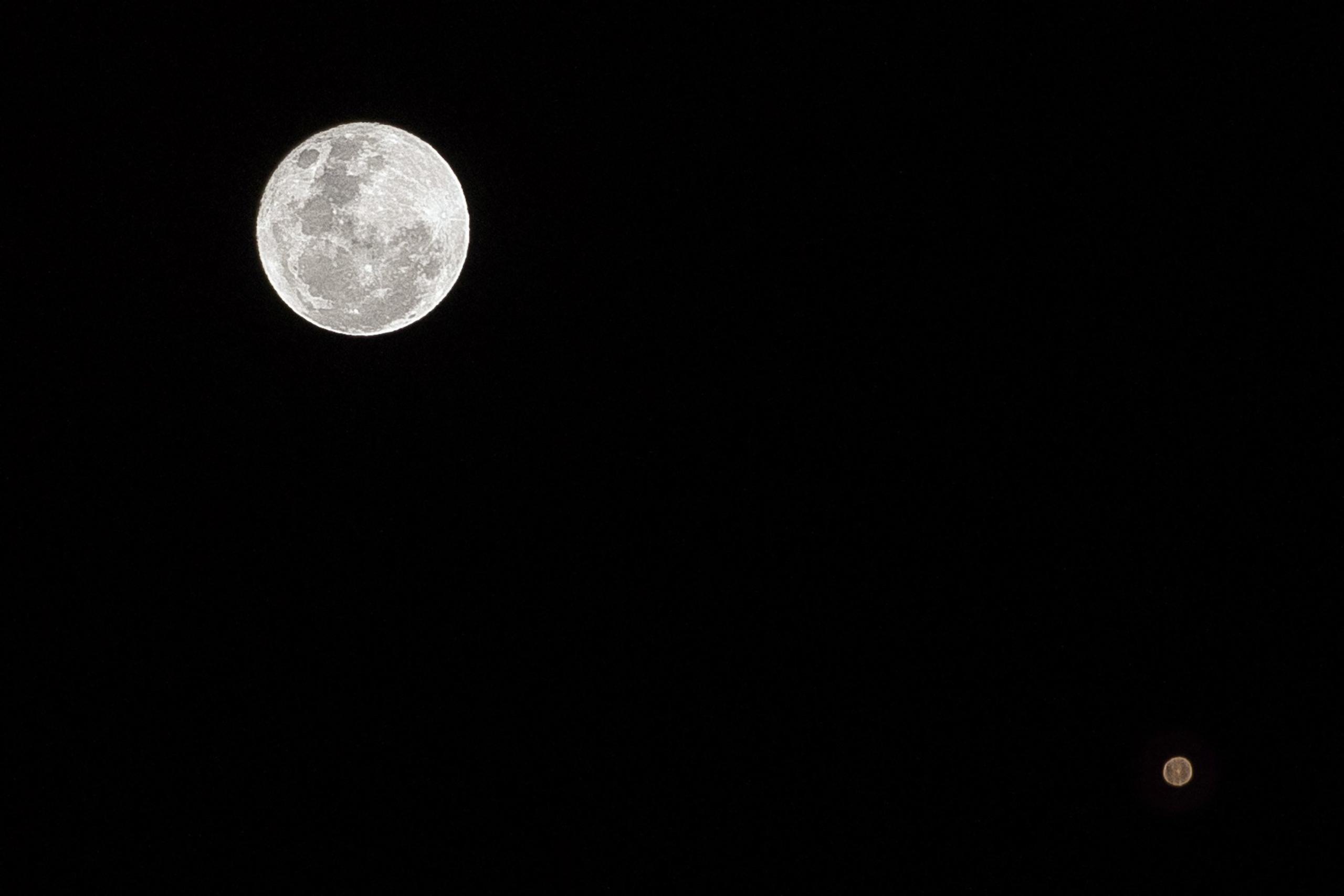Mars opposition: What is it, what's happening and when?
- Published
- comments

A full Moon will be visible with a full bright Mars
Mars will have its biggest and brightest moment of the year this week.
It comes at a point when Earth sits directly between Mars and the Sun, called 'opposition' and is the planetary equivalent of a full Moon - When a planet is close to the Earth, and on the opposite side of the Earth to the Sun.
For those looking into the night sky, the Red Planet will remain above the horizon for most of the night, making it an excellent time to see Mars, if the weather and clouds allow it.
This year is extra special as the event, which only happens roughly every two years, will also happen at the same time as a full moon.
Why is it happening?
The event happens when Earth passes directly between the Sun and Mars
Earth passes directly between the Sun and Mars once every 26 months. This can occur at any point along Mars' orbit around the Sun, so the distance between Earth and Mars can vary year on year.
According to Nasa, the minimum distance from Earth to Mars is about 33.9 million miles (54.6 million kilometres). However, that doesn't happen very often.
"After Earth, Mars is the next furthest planet from the Sun. It takes 687 days for the Red Planet to complete one orbit [of the Sun]. This means that from Earth, it appears to lie in the opposite part of the sky to the Sun, once every 2.1 years," says Astronomer Pete Lawrence.
Opposition is a big deal for Mars!
When is it happening?
The precise time that Mars reaches opposition will be 5:42am on the morning of 8 December.
However, we won't be able to see it at this time. So if you want to spot Mars, the best time will be earlier that night, or in the evening of 7 December.
Mars will have an orange glow in the night sky
Why is so special this year?
This year, opposition happens at the same time as a full moon.
"Excitingly, from the UK in the early hours of 8 December, the full Moon appears to move in front of Mars, hiding it from view; a rare event known as a lunar occultation of Mars," says Lawrence.
"This event will be visible to the naked eye, as well as through binoculars and telescopes. From the centre of the UK, Mars disappears at 4:54am, before reappearing just over an hour later at 5:56am."
How to spot Mars
During this December, Mars is one of the brightest objects in the night sky, making it relatively easy to spot even without a pair of binoculars or a telescope.
The planet is orange in colour and can be seen above the horizon in the east-northeast when it's dark, just after sunset.
- Published3 December 2022
- Published30 November 2022
- Published22 February 2021
